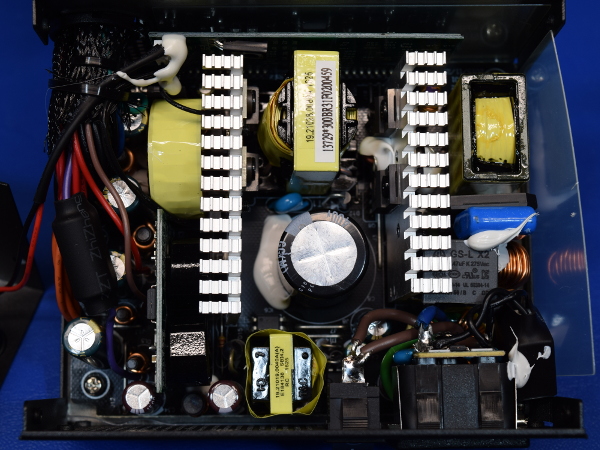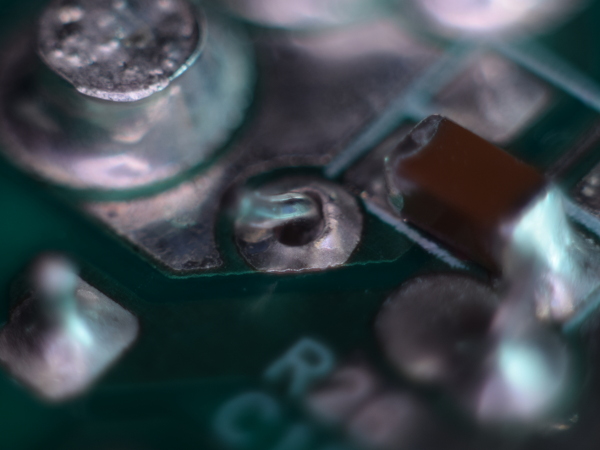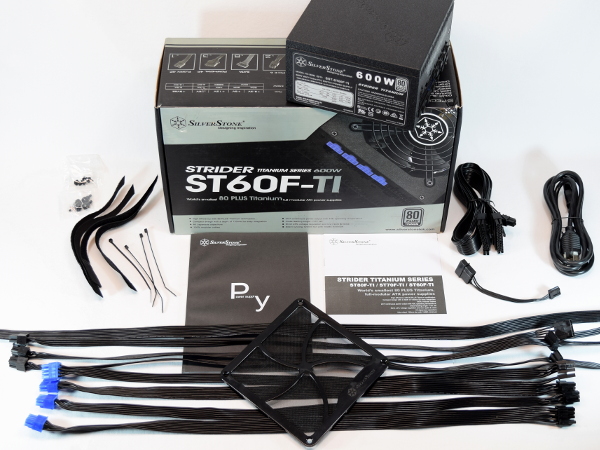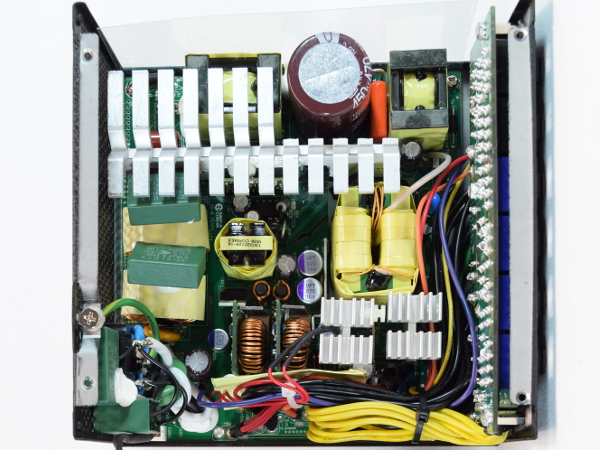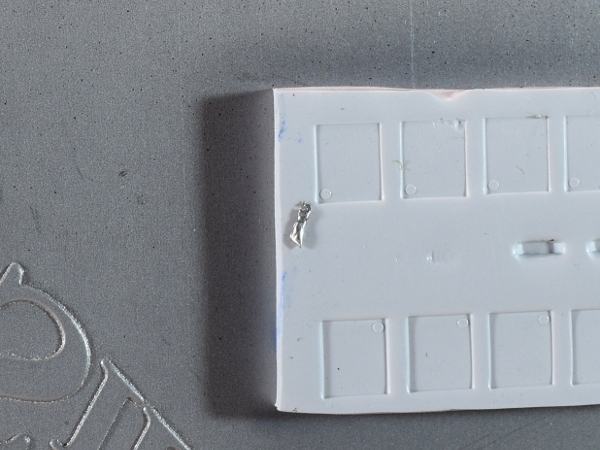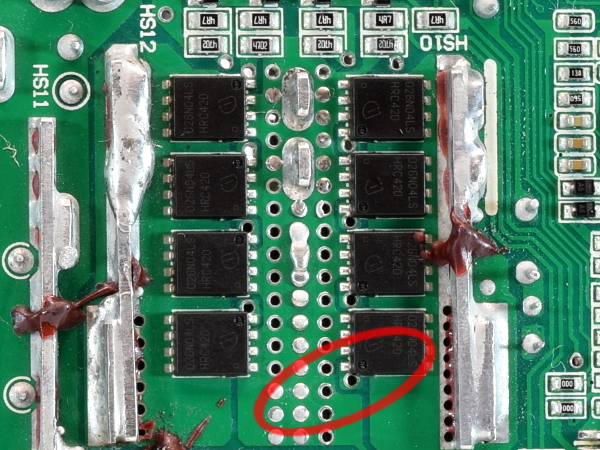SilverStone Stash Tour
Size Comparison
Before going inside, I thought I’d do a quick size comparison for those of you who aren’t familiar with the difference between an SFX and ATX PSU. The ST30SFv2 is a whole two inches shorter, one inch narrower, and one inch thinner.
MORE: Best Power Supplies
MORE: Who's Who In Power Supplies
ST30SFv2 Quick Peek
Despite being half the size, the ST30SFv2 does not look as crowded. It's also a fair step up in quality from the ST60F. We find Nichicon primary capacitors, Teapo SC support capacitors, Nichicon capacitors for the 5VSB rail, and DC-DC converters for the 3.3V and 5V rails.
MORE: Best Motherboards
MORE: How To Choose A Motherboard
Cold Solder
Wave soldering on the bottom looks good overall except for one cold solder joint on the 3.3V bulk capacitor’s positive lead. I’ll hazard a guess that an air bubble got trapped in the solder wave next to the capacitor, preventing the capacitor’s lead from getting hot enough to accept solder.
Get Tom's Hardware's best news and in-depth reviews, straight to your inbox.
MORE: Best Gaming Monitors
MORE: Best Professional Monitors
Questionable Folding
What happened here? Someone messed with the top solder joint on the 5901 (5.9k) resistor and the 103 (10k) resistor below it, then left a small solder blob stuck on top of the next resistor to the left. Moreover, the 362 (3.6k) resistor further to the bottom-right has one terminal showing signs that its pad was touched up. I also do not like how the top thermistor wire is close to shorting out its other wire.
Whoever built this unit needs to practice stab-soldering and aim. Cropping these two leads a little shorter wouldn’t hurt either.
MORE: Best Memory
MORE: The Most Common DDR DRAM Myths Debunked
ST60F-TI
If you asked me what my ideal power supply would be, I’d say a 350W 80 PLUS Titanium unit, as none of my PCs use much over 200W under full load. Unfortunately, Titanium-class PSUs under 600W are few and far between, so SilverStone sent me its closest match: the 600W Strider Titanium.
The ST60F-TI may not use the latest and greatest in power conversion technology, but it should still serve my purposes as a reference point well.
Before I do anything else with it, though, I have to take it apart.
MORE: Best Gaming Laptops
MORE: All Laptop Content
ST60F-TI Quick Peek
The ST60F-TI's claim to fame is being the smallest 600W 80 PLUS Titanium power supply available, which is achieved using a combination of high-rise components and offloading surface-mount circuitry to riser boards. At a glance, all of the identifiable electrolytic capacitors on the main board are from Chemi-Con, as expected from a ~$150 PSU.
MORE: Best Graphics Cards
MORE: How Well Do Workstation Graphics Cards Play Games?
ST60F-TI Spooky Discovery
When I pulled the circuit board out of its enclosure, I made a startling discovery: I found a solder blob solidly stuck to the 12V synchronous rectifier FET's thermal pad. If you look closely at the imprint on the pad, this solder blob is located near pin #1 of that FET. Care to guess what else is in the neighborhood of that solder blob?
MORE: Best CPUs
MORE: Intel & AMD Processor Hierarchy
FET Neighborhood
At one end of the pad, we see the impression from the two bus bar tangs (up top in this picture). On the bottom-right FET, we see the pin #1 dimple at the solder blob location. The blob was a loose solder bridge between the FET’s gate and the PSU’s 12V rail in the middle. Depending on shipping vibrations and other factors making or breaking the solder bridge’s contact, there is a fair probability that the power supply would have self-destructed had I turned it on before taking it apart.
MORE: Best Cases
MORE: Best CPU Cooling
One More Blob
While reviewing photographs of my findings to discuss with SilverStone, I noticed another solder blob hanging on one of the 12V bus bar tangs in the middle of this picture. I’ll have to clean this up before using the ST60F-TI–wouldn’t want it to break loose, rattle around, and find a new home in an unsafe location.
Bus bars are great for minimizing wiring losses and replacing jumpers. However, they have high thermal mass that wicks heat away, making them more challenging to solder cleanly and repeatably. The slightly darker area to the right may also be a hint of rework. Perhaps the blob came from there instead. Either way, it doesn't belong.
MORE: Best PC Builds
MORE: How To Build A PC
Like So Many Snowflakes
My stash of SilverStone samples ended up piling much higher than I expected it to. Again, do give SilverStone another round of applause for its participation.
I’d say that the biggest surprise in my stash (so far) is the FET solder blob on the ST60F-TI. Word from Enhance via SilverStone is that it is as surprised as I was. Do I have worse luck than average with devices suffering from manufacturing defects and QA oversights? In any case, I do believe that these few discoveries show that some manufacturers don't have special reviewers-only sample piles.
Which of these products would you like me to revisit more thoroughly first? Are there any specific twists you'd be interested in? Let me know in the comments section!
MORE: Best Deals
-
clonazepam Hello Daniel. I'm afraid these parts aren't all that interesting to me, personally. I respect others may feel different. Now, here's what I came up with given my level of interest. I think you should design a suspension bridge, and build it out of these parts. Once complete, see how much weight it can support before collapsing.Reply
I hope you can appreciate my contribution to the comments section. -
Kridian I never think to inspect PSUs for bad soldering, but you've just convinced me to start.Reply
-
Daniel Sauvageau Reply
You never know what you'll find until you start looking. Doing so properly and (reasonably) safely however isn't within everyone's capabilities.19158928 said:I never think to inspect PSUs for bad soldering, but you've just convinced me to start. -
Daniel Sauvageau Reply
Hopefully not, but it shows that even top-tier ODMs like Enhance in the Strider's case aren't exempt of occasional QA oversight. Can't draw a definitive conclusion on how common those assembly/QA issues are from a sample size of one.19159703 said:So now i have to pull apart every PSU I buy to do their QA checking for them?
-
dstarr3 I love the reversible USB A and B cables. Why has it taken this long for that to be done, considering it was so simple?Reply

